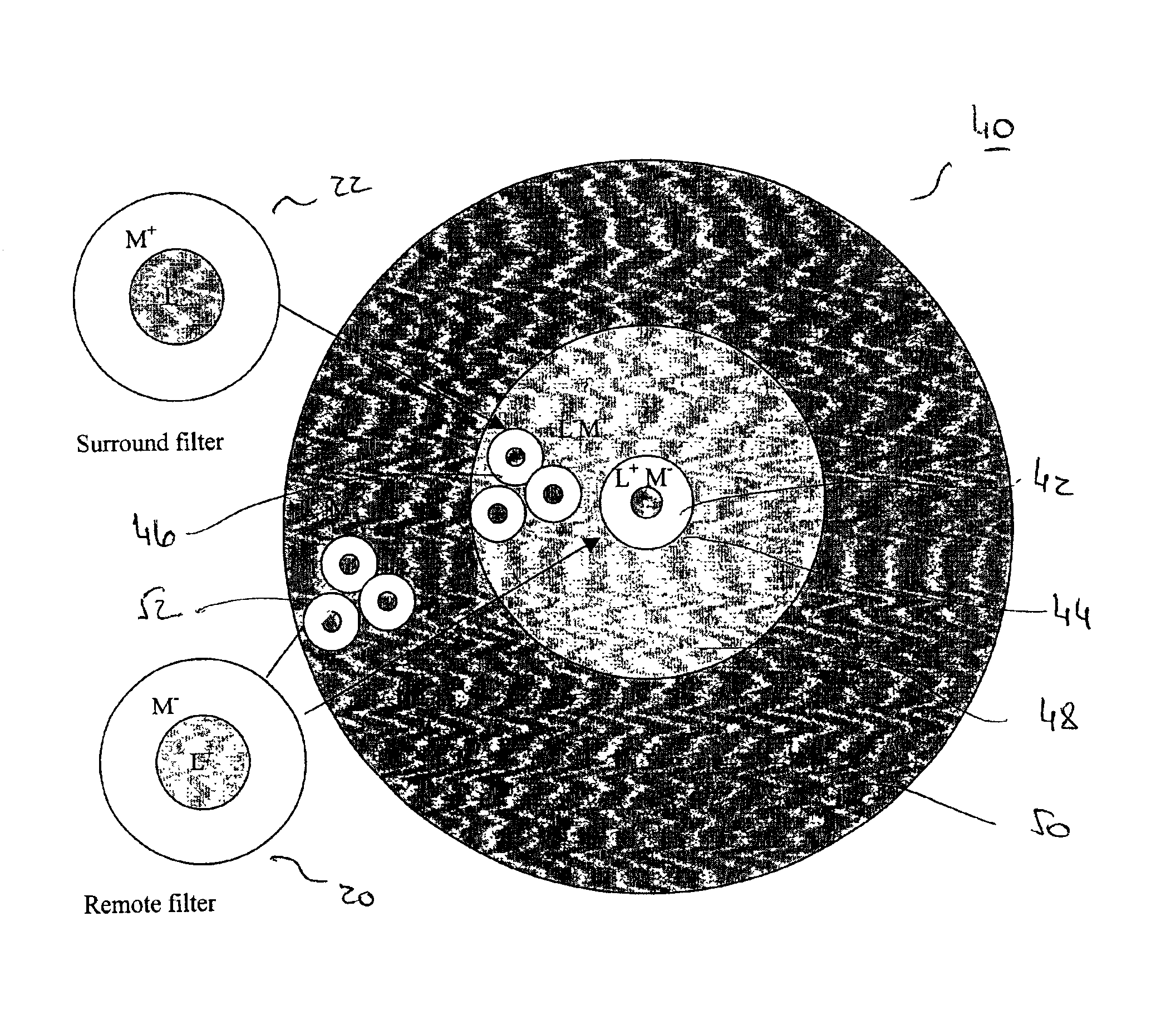Method for automatic color and intensity contrast adjustment of still and video images
a technology of contrast adjustment and still and video, applied in the field of image processing, can solve the problems of lack of physiological-like features of contrast adjustment methods
- Summary
- Abstract
- Description
- Claims
- Application Information
AI Technical Summary
Benefits of technology
Problems solved by technology
Method used
Image
Examples
case 1
[0074] The M-RGCs ‘center’ and ‘surround’ sub-regions are adapted separately (the values of the parameters are based on electrophysiological findings, in a similar manner to that found and analyzed for M-RGCs by Shapley & Enroth-Cugell and Dahari & Spitzer). As described in these references, and as for color contrast, the response of an “on” and “off” M-RGC to a stable visual stimulus at t=∞ (the “static case”) is: Rop(t=∞)=GcenGcen+σcen-GsrndGsrnd+σsrnd(22)
Where σ is an adaptation factor which depends on the stimulation (here, at t=∞) of both the sub-regions and that of the remote area. In other words, the adapted opponent response is obtained by a subtraction of the adapted surround response from the adapted center response. The adaptation factor of each sub-region has separate ‘local’ and ‘remote’ components and consists of the same spectral properties as the sub-region. For example, for the “center” sub-region, the adaptation factor is given by:
σcen=σcen,local+σcen,remote
where ...
case 2
[0077] In the alternative embodiment of performing the adaptation for intensity contrast by applying it at the double-opponent stage, eqs. 22-24 are not implemented. In general, the steps of the method for intensity adaptation at the double-opponent stage follow those of the color contrast adaptation. One difference vs. the color contrast case is that the input of the do-surround sub-region is optional, and intensity adaptation can be performed without it. In analogy with eq. 1, the opponent cell's response, Rop is the subtraction between the center and the surround output function values of on-center and off-center cell types:
Rop=Gcen−Gsrnd (25)
where Gcen is equivalent to Gc and Gsrnd is equivalent to Gs, both however being applied here for the cells that code the intensity domain. The off-center cells have similar RF structure but with opposite signs.
[0078]In analogy with the color contrast case, the achromatic double-opponent center signal (do-center response) is built from the ...
PUM
 Login to View More
Login to View More Abstract
Description
Claims
Application Information
 Login to View More
Login to View More - R&D
- Intellectual Property
- Life Sciences
- Materials
- Tech Scout
- Unparalleled Data Quality
- Higher Quality Content
- 60% Fewer Hallucinations
Browse by: Latest US Patents, China's latest patents, Technical Efficacy Thesaurus, Application Domain, Technology Topic, Popular Technical Reports.
© 2025 PatSnap. All rights reserved.Legal|Privacy policy|Modern Slavery Act Transparency Statement|Sitemap|About US| Contact US: help@patsnap.com



